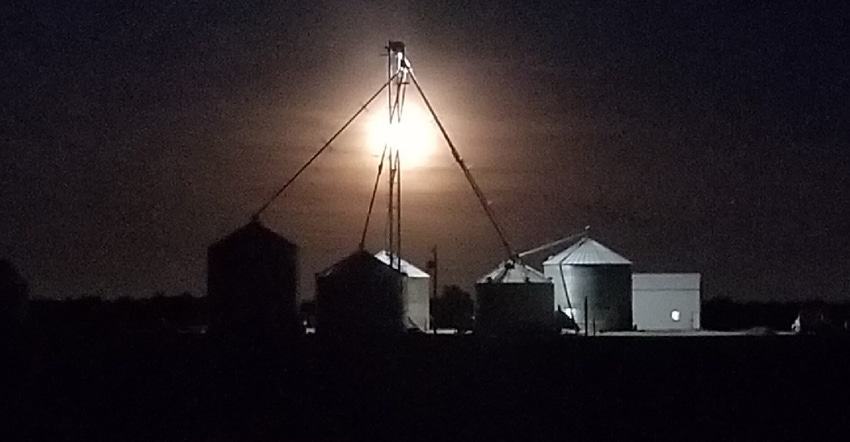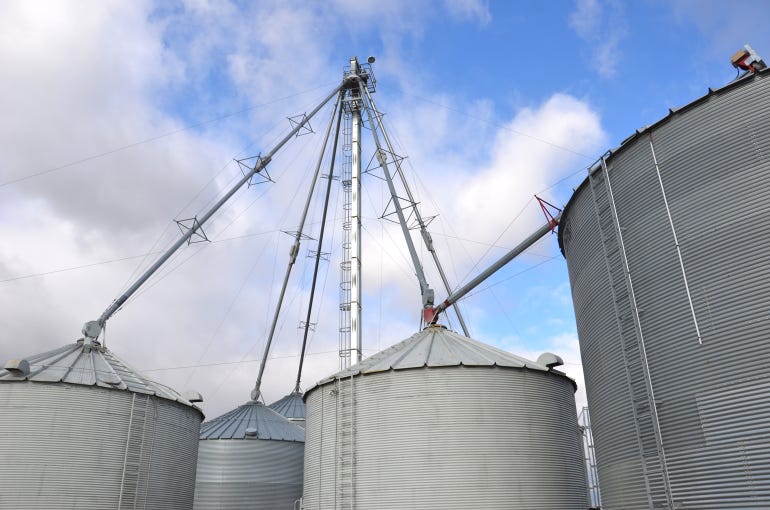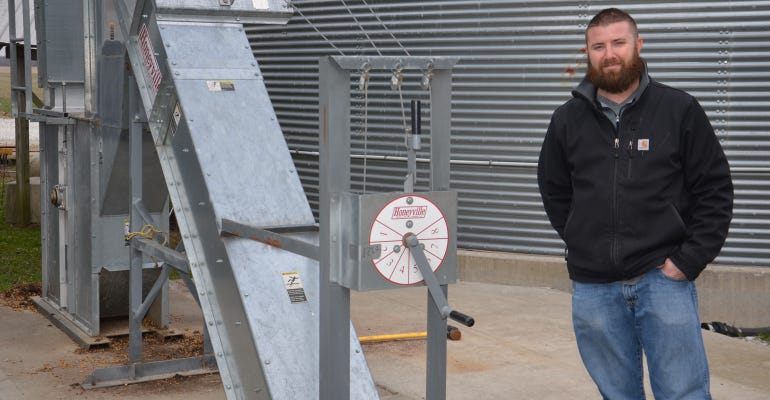
The hallmark of planning grain storage systems since shelled corn became a commodity has been to plan ahead. Leave space in case you want to grow and add bins later. This advice was often offered by the late Bruce McKenzie, longtime Purdue University Extension agricultural engineer, when he advised farmers as the grain bin boom began.
Keith Cooper, Hendricks County, Ind., left room for more bins when he erected his first grain bins in the late 1980s. But he also pictured where a grain leg would go if he ever decided his operation could justify one. He left a strategic spot open between bins for a leg and a dump pit.
When he built his first bins, and even when he added more bins, he filled them using augers.
Keith figured the time to invest in a grain leg had arrived by 2012. The leg, which handles 5,000 bushels per hour, went up that year.

JUST ADD LEG! Keith and Taylor Cooper were able to add this grain leg a few years ago because Keith kept a spot open for it as he added bins over the years.

“We were able to eliminate the need for augers to fill each bin,” he says. “We have certainly gotten good use from the leg since we put it up.”
Today, Keith farms with his son Taylor. “We are a lot more efficient since we put up the leg,” Taylor says. “Our labor is mainly Dad, myself and a part-time person in the spring and fall, and we’re a lot more efficient in the fall now than we were before.”
That’s even more so when elevators have long lines and hauling some loads to an elevator out of the field isn’t a viable option, Taylor adds. Unloading with augers was too time-consuming, and they couldn’t keep up during harvest and do it efficiently, he adds. Now that they can dump into the pit and empty a truck quickly, it’s much easier to take grain away from the combine and keep it moving.
The grain leg the Coopers installed reaches all but one bin directly. A rooftop leg allows them to send grain from the leg to the farthest bin in the grain system.

INCREASED EFFICIENCY: Taylor Cooper says since he and his dad added the grain leg and no longer must unload from the field with augers, they can handle corn coming from the combine.

Most corn didn’t need a lot of drying time this fall, Keith notes. When they do dry grain, they use two in-bin dryers fueled by propane heaters. Once corn in those bins is dry, they empty it into a truck and use the grain leg to move it into a storage bin.
They’ve considered investing in a continuous-flow dryer but didn’t feel the investment was warranted. The system they’ve put together works for their operation, Taylor says.
“We could always use more storage space, but it’s expensive, even to add rings and make existing bins taller,” Keith says. “This system works for us.”
About the Author(s)
You May Also Like




